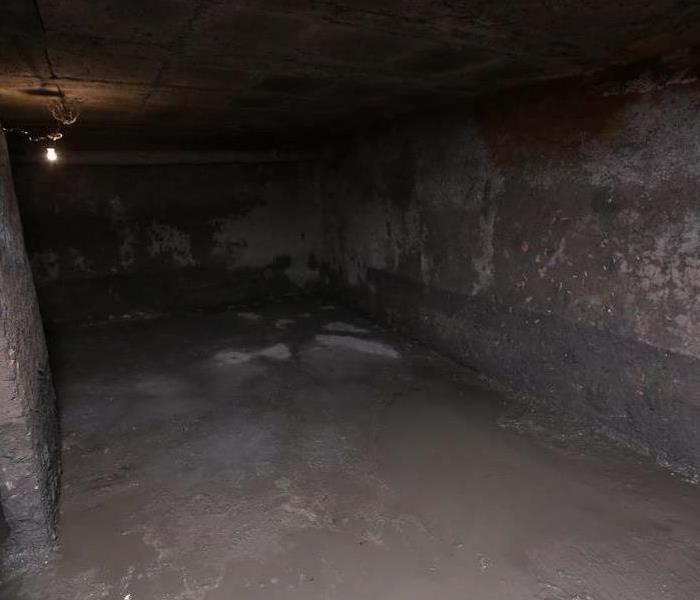Causes of water in the crawl space
3/12/2023 (Permalink)
If you're having a problem with water in your crawl space, the first thing you need to do is identify the source of the moisture. The most common causes of moisture problems in a crawl space are water leaks.
Cause of Loss
Water leaks are the most common cause of crawlspace water damage. Water leaks can come from the home's foundation walls and slab, or from condensation on cold surfaces. Rising dampness due to excessive soil permeability, also know as high level of porosity in the soil. Any combination of these factors can be responsible for moisture problems in your crawlspace. It's best to have a professional do an inspection with an infrared camera so they can pinpoint where exactly there's an issue with your home's drainage system and how it was caused.
Identify the source
The first step in dealing with a moisture problem in your crawl space is identifying the source of the moisture. If you have an infrared camera, use it to locate where water is leaking into or out of your home through walls and floors. Repair or replace damaged areas as necessary, but if you can't find a specific point of entry for water leakage (or if there are too many sources), it may be worth considering crawl space encapsulation. Crawl spaces are notorious for having poor air circulation and high humidity levels, both conditions that make for ideal breeding grounds for mold spores and other harmful contaminants.
Crawl space encapsulation involves sealing up all openings between rooms within a house so that only one room has access to the outdoors, our basement. This means removing windows from basements so they don't leak into other parts of homes, installing double doors between basements/attics/roofs, sealing up cracks around pipes going into these rooms.
A high level of porosity in the soil.
A high level of porosity in the soil means that it can absorb and hold water. Soil porosity is affected by the size and shape of soil particles, as well as their distribution within the soil. The amount of organic matter present also plays a role in determining how much moisture will be held by the soil.
Excessive soil permeability is a common problem in crawl spaces because these areas tend to have large amounts of loam or clay that contain many fine pores which allow for rapid drainage through capillary action (the movement of liquid through narrow spaces).
Infrared Camera
The best way to identify and correct a moisture problem is by using an infrared camera to locate its source. Infrared cameras detect the minute changes in temperature that occur when water is present, making it possible to find hidden sources of moisture without having to dig up the entire crawlspace. This can save time and money, since you won't need to hire a contractor for large excavation jobs if there's only one area with high levels of moisture (like when there are pipes running through the floor).
If you think you may have a moisture problem in your crawlspace, it's important to get it checked out by a professional. The best way to do this is by using an infrared camera. This device can identify the source of moisture in your home, so that you can take the appropriate steps towards fixing it and preventing future issues from occurring.





 24/7 Emergency Service
24/7 Emergency Service
